By Gouri Satya, Sr.Journalist
Dasara is no Dasara without the Maharaja’s Palace. With a rich legacy of four centuries, both as a royal residence and as a centre of attraction, it has always been playing a crucial role during the 10-day-long celebrations. What is significant is even after four centuries, its pivotal role has not changed. In fact, its importance has doubled as the Mysore Palace hosts two Dasaras now — one, for the royal family in tune with the historic tradition, and the other, for the State for its celebrations.
The Wadiyars’ Palace in Srirangapatna has played no less a crucial role. It has played a pivotal role for the royal celebrations in the Wadiyars’ early days. While the Srirangapatna Palace has played a notable role for a period of two centuries from 1600s, the Mysore Palace came to focus only after 1800, when Krishnaraja Wadiyar III was installed on the throne and a residence was built for him in Mysuru.
The Srirangapatna Palace was the determining place for the Navaratri celebrations from the days of Raja Wadiyar (1578-1617) when he launched the maiden Dasara after taking over the island town and making it his capital in 1610.
One will know the central role the Srirangapatna Palace has played when one looks at the elaborate description of the Navaratri celebrations, decorations and ceremonies both inside and outside the royal residence available in Kannada literary works. Although exaggerated with poetic elaboration, yet these works of classic give us an impression of the Palace, its location and beauty of the Palace of the Wadiyars in their early period of rule.
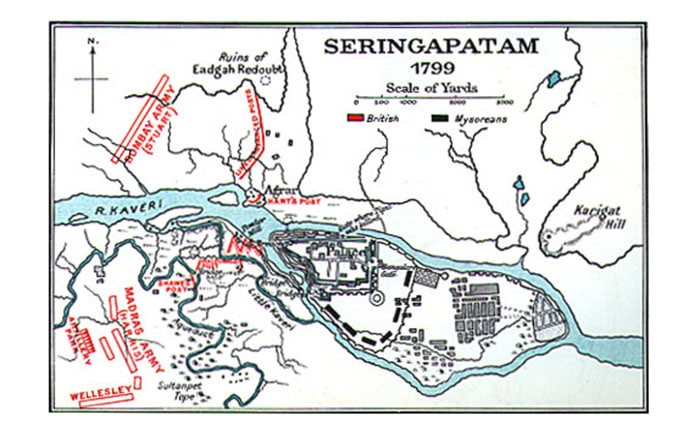
Srirangapatna map 1799 indicatIng the Maharajas Palace.
An early work, Kanteerava Narasaraja Vijaya, and other similar works of Kannada of the period of the Wadiyars serve as evidence to show that their Palace existed close to Sri Ranganathaswamy Temple. Govinda Vaidya dedicates a whole chapter for the description of the Palace of Kanthirava Narasaraja Wadiyar (1638-1659) at Srirangapatna.
Even during Tipu Sultan there is evidence to show that a Palace of the Wadiyars existed in the town of Lord Ranganatha. The inscription which says, “Birth Place of H.H. Sri Krishnaraja Wadiyar III born Monday 9th July 1789,” in a Mantap near the Temple and some other records, like a Srirangapatna map of 1799, confirm that the Palace of the Maharajas existed close to the temple.
When the Palace at Srirangapatna came into existence after Raja Wadiyar took over the place, The Annals of the Mysore Royal Family records that the Pattabhisekha (crowning ceremony) of Yaduraya (1399-1423), first of the Wadiyar kings in Mysuru, took place in the Palace in Mysuru. Again, the same 17th century Kanteerava Narasaraya Vijaya mentions about a Palace that existed in Mysuru, which was the capital of the Mysuru rulers, including Raja Wadiyar till he moved to Srirangapatna in 1610. He and other rulers visited Mysuru for worshipping Goddess Chamundeshwari often and stayed in the Palace in Mysuru.
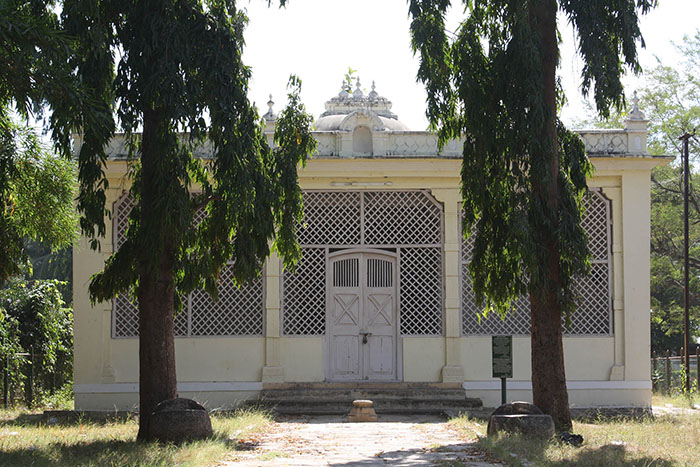
Mummadi’s birth place at Srirangapatna.
The Palace that existed during the period of Hyder Ali Khan and Tipu Sultan in Mysuru was smaller in structure without any architectural skill. It was being used less often, and hence cared very little. The stones of the Palace Fort were shifted for building Nazarbad, a new extension outside the Palace fort-walls.
When the capital was shifted back to Mysuru in 1799 from Srirangapatna and the throne was restored to Krishnaraja Wadiyar III, there was no suitable building to accommodate the royal family in Mysuru. Initially, they were housed at a house in Nazarbad, where Dasara ceremonies is said to have been conducted.
Meanwhile, a new Palace was constructed on the remnants of the old Palace that existed prior to 1800 in Mysuru. This Palace was constructed around 1804. It even hosted a number of Europeans to attend the Durbar in 1805, when they expressed desire to see Krishnaraja Wadiyar III sitting on the throne and conducting the Dasara ceremonies. They attended the Durbar on a day fixed exclusively for them, paid their respects to the Maharaja and received gifts and flowers from him. This day came to be known as ‘European Durbar Day.’
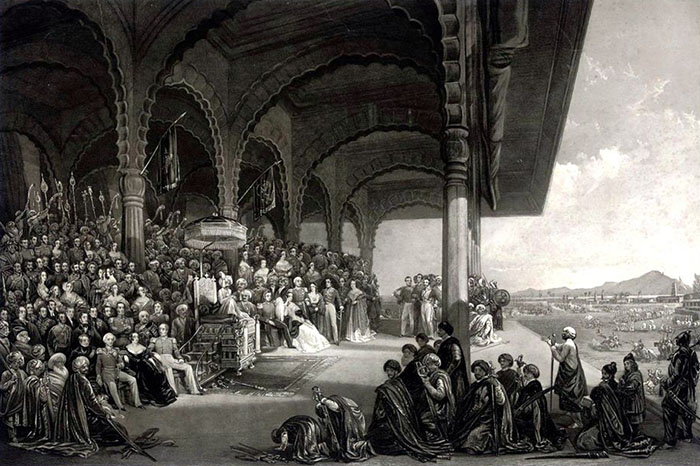
Mummadi’s European Durbar in old Palace around 1850 with Commissioner Lord Cubbon.
The new Palace of Krishnaraja Wadiyar III in Mysuru was more commodious than elegant. It was surrounded on all sides by houses, many of them small and constructed of wattle and mud.
The front portion was gaudily painted and supported by four elaborately carved wooden pillars. It comprised the Sejje or the Durbar Hall, an open gallery where the King was sitting in Durbar on occasions like Dasara. It was here that the European Durbar was conducted.
The principal gate opened on a passage under the Sejje, leading to an open yard, which we now call the Ane Bagilu or the elephant gate. At the further or the west side of this courtyard was the door leading to the women’s apartments, which occupied most of the western portion of the Palace.
The interiors and pillars were gaudily and thickly painted. The northern side of the Palace comprised various offices, such as the armoury, library etc., and on the south were the rooms occupied by the Maharaja. Of these, the most interesting was the Amba Vilasa, an upstair room sixty-five feet square and ten feet high, with a raised ceiling in the centre. It was here that Krishnaraja Wadiyar III received the European guests and transacted the ordinary business of the day.
A wooden railing separated that portion of the room in which the Maharaja’s seat was placed from the rest, and the adjacent wall was hung with pictures, principally of officers connected at different periods with Mysore, which the Maharaja was accustomed to uncover and point out to his European visitors.
The floor was of chunam or lime mortar and, with the exception of the doors which were overlaid with richly carved ivory or silver, there was no attempt at magnificent display.
The sleeping and eating apartments of the Maharaja were for the most part small and confined and opened upon the Amba Vilasa. Outside of it, there was a stall in which was kept the sacred cow or the Pattada Hasu worshipped by the Maharaja. A temple was adjacent to it.
A devastating fire that broke out in 1897 destroyed a major portion of the northern side, leaving only the back portion, which still exists attached to the present Palace. It is called Karikal Thotti, because of the blackstone pillars. This part of the Palace now houses the personal museum of the Wadiyar family.
The fire that broke out was so destructive flames spread all around and entered into the Palace as well. The Palace was entirely made of wood and mud. The front, like its interiors, was gaudily painted with thick coats, and supported by four elaborately carved wooden pillars. The wax paintings had earned the title Aragina Mane (the house of wax) for the Palace. All these combustible materials, including the thick art works, caused the fire to spread swiftly.
The small ivory and silver doors elaborately made out, which were saved from the fire in 1897, are seen in the present Palace as one goes up the stairs towards the private Durbar Hall. They show the embossed figures of Krishnaraja Wadiyar III engaged in pleasure activities.
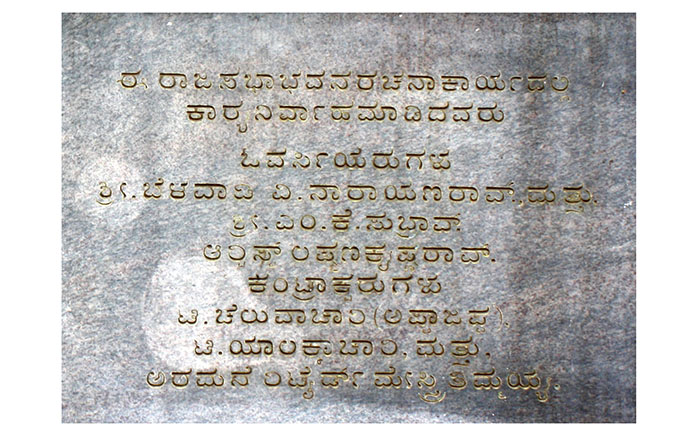
Contractors who built Mysore Palace.
The present Palace has retained the same architectural details as those of the old Palace. But, it has been done on a larger scale and in a grander manner, with attention to safety aspects. While the newly-built front portion of the present Palace is in the Indo-Saracenic style, the old portion at the back is in traditional Hindu style.
Old order might have changed over the decades and centuries. The size and structure of the royal residence might have changed over the period. But, the Palace continues to be the focal centre as always, and for the 2018 Dasara too.



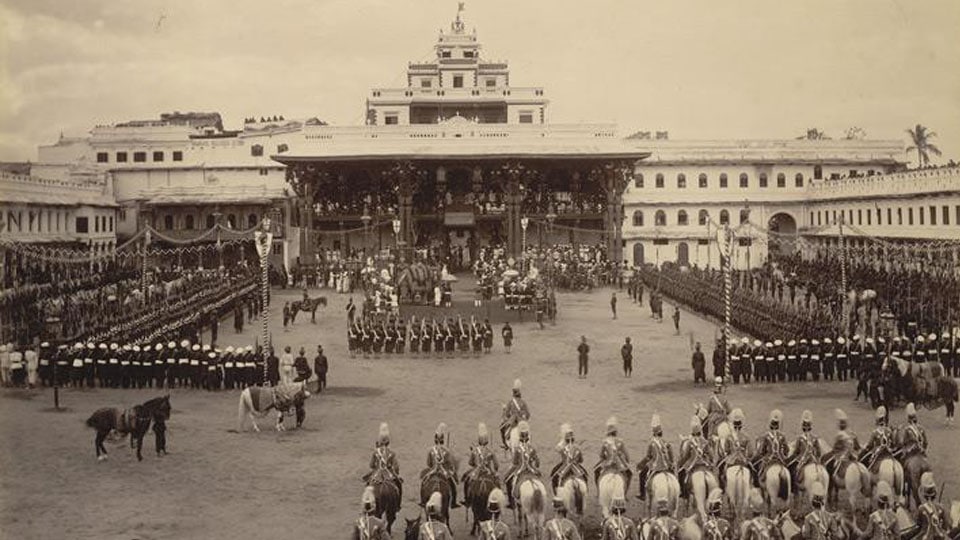
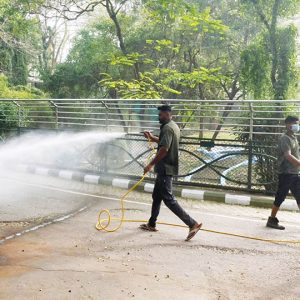

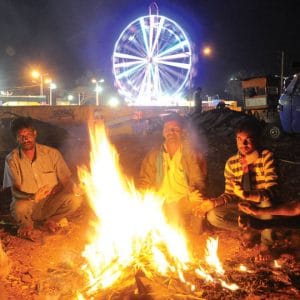
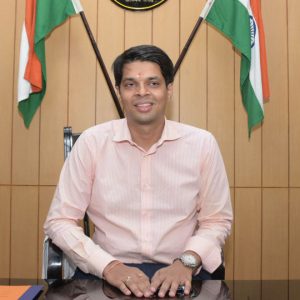
Sir, The photo of Sri Mummadi European durbar looks wrong. The palace appears to be facing south. If the image is flipped then the image looks correct with the people holding their sword in their right hand. Kindly correct if am wrong.
ಅನಂತ ರಾಜು ಅವರೆ,
ಅರಮನೆ ದಕ್ಷಿಣಕ್ಕೇನೆ ಮುಖ ಮಾಡಿರೋದು. ಗೂಗಲ್ ನಕ್ಷೆಯಲ್ಲಿ ಪರಿಷೀಲಿಸಿ ನೋಡಿ.
Interesting history, the part of Wadiyars. was described in a book called : ” Mysore Kaipidi”, available in 1950s.
Just, let the State Government take over the Palace and convert it into a tourist attraction, in the lines of Versailles Palace. With the death of Srikanta Dutta, the last Wadiyar, there is no meaning in continuing this dynasty artificially by installing an adopted person. There is no royalty in India, after it became independent.
This article is incomplete without mentioning the architect-Henry Irwin, an Irish architect, who specialised in Indo-Saracenic Revival Architectures ( as so many British architects did then, and the Tajmahal Hotel in Mumbai is an example ) and had to his credit many number of buildings in Chennai, including the High Court there. He was hired in 1912 to construct the beautiful structure of the Durbar Hall etc.. as described in the article. He retired to Ooty after the construction and died there in 1922.
We should also add that Henry Irwin was hired by then queen-regent Maharani Kempa Nanjammani Vani Vilasa Sannidhana, a person of immense foresight, and it is no wonder that her eldest son Krishnaraja Wadiyar IV had such major impact through his lasting contributions in many areas as the architect of Modern Mysore.